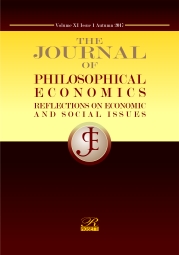Dialectics and the Austrian School: A Surprising Commonality in the Methodology of Heterodox Economics?
Dialectics and the Austrian School: A Surprising Commonality in the Methodology of Heterodox Economics?
Author(s): Andy DenisSubject(s): Philosophy, Social Sciences, Economy, Special Branches of Philosophy, Sociology, Philosophy of Science, Social Theory, Socio-Economic Research
Published by: Editura Rosetti International
Keywords: dialectics; Austrian school; methodology; heterodox; economics;
Summary/Abstract: This paper is prompted by the concluding comments to a recent paper (Denis “Hypostatisation”), which suggests that the neoclassical use of the concept of equilibrium expresses a formal mode of thought. Heterodox tendencies from Marxian to Austrian and Post Keynesian economics, that paper continues, exemplify a dialectical mode of thought in their common rejection of neoclassical equilibrium theorising. Heterodox currents in economics are – particularly in terms of their analysis and policy prescription – often as divided amongst themselves as they are from the orthodoxy. Nevertheless, the present paper suggests, there may be something profound uniting these disparate heterodox trends: the adoption of a dialectical method. The paper draws on the work of Sciabarra (“Marx”, “Total”), who argues that Marxian and Austrian economics are intellectual cousins sharing a methodological approach. He suggests that making process primary, which we might expect of Austrian economists, is the essence of dialectics, which we might identify with Marxism. If that is the case, then perhaps (a) we can only understand the method of neoclassical economics by contrasting it with a dialectical approach, and (b) we can explore methodological common ground between the various heterodox currents by examining their attitude, both implicit and explicit, to dialectics. Pluralism in economics requires, not merely toleration – though indeed it does require that – but mutual engagement, a conversation. For that to take place we need an understanding of what divides and unites the various approaches. This paper is offered as a contribution to the development of that mutual understanding.
Journal: Journal of Philosophical Economics
- Issue Year: I/2008
- Issue No: 2
- Page Range: 151-173
- Page Count: 23
- Language: English

